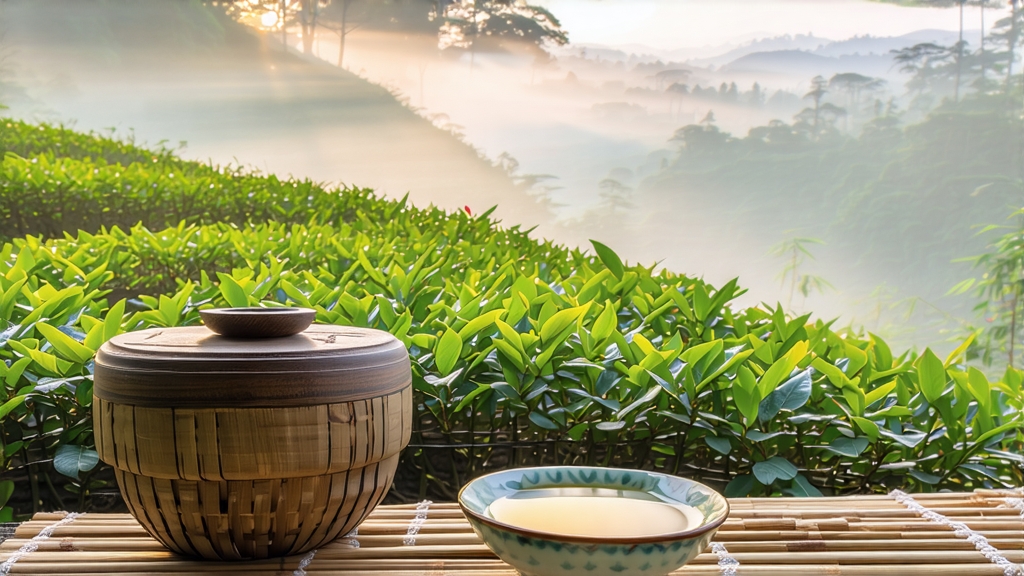
Rising like a jade island from the Tropic of Cancer, Taiwan’s Alishan range is rarely mentioned in the same breath as Wuyi or Anxi, yet between 1,000 and 1,400 m of elevation it nurtures one of the most fragrant oolongs on earth. Alishan High-Mountain Oolong—often shortened to “Alishan Qing Xiang Oolong”—is not a single cultivar but a style forged by altitude, mist, and a post-war migration of tea craftsmen who carried Fujian’s Qing Xin (Green Heart) bushes across the strait. The result is a liquor that smells like mountain orchids after rain and tastes like sweet corn steamed in bamboo.
History
Tea reached Taiwan in the early 1700s, yet Alishan remained a forestry reserve until the 1970s, when the Taiwanese government encouraged high-value crops to replace logging. In 1973 a young agronomist named Mr. Lin Tsai-liang transplanted 3,000 Qing Xin cuttings from Pinglin to Shizhuo village, lured by cool nights that slow leaf growth and concentrate amino acids. Within a decade Shizhuo’s farmers were exporting hand-rolled spheres to Bangkok and San Francisco, branding them “Alishan High-Mountain” to distinguish the tea from lower-elevation Taiwanese oolongs. The 1999 Jiji earthquake shattered mountain roads but also triggered landslides that deposited mineral-rich schist into the soil; cupping tables noticed a brighter, more crystalline sweetness thereafter, sealing Alishan’s global reputation.
Cultivars & Micro-Terroir
Although Qing Xin remains the dominant cultivar, farmers now interplant Jin Xuan (TTES #12) for its natural milky note and the newer TTES #23 “Ruby” for a grape-skin top note. The true signature is elevation: above 1,200 m the diurnal swing can exceed 15 °C, forcing leaves to thicken their cuticle and store catechins and sucrose. Morning fog refracts sunlight into soft, blue-rich wavelengths that boost theanine, yielding the famous “umami-sweet” balance. The soil is a friable laterite shot with quartz; its acidity (~pH 4.5) locks up phosphorus and forces the bush to metabolize more aromatic terpenes—think linalool and geraniol—responsible for the tea’s orchid-lifted bouquet.
Plucking Standard
Only the “spring show” and “winter show” are harvested; summer is too rainy and autumn too warm. Pickers climb before dawn when leaf turgor is highest, selecting the si ji chun standard: one unopened apical bud flanked by three half-mature leaves. The third leaf must still curl like a shrimp’s tail—an indicator of optimal polyphenol oxidase activity. A kilo of finished tea requires 22,000 plucks, all done by hand because mechanized cutters bruise the tender petioles and trigger premature oxidation.
Crafting the Leaf
Withering begins in the courtyard under 70 % shade cloth; the goal is 8 % moisture loss in 45 minutes while maintaining 25 °C. Every ten minutes the leaves are tossed on bamboo trays—an action called “yao qing” that cracks cell walls and invites ambient enzymes. Once the edges turn jade-green with a rust-red rim, the leaf is ready for tumbling. A drum shaqing at 280 °C for four minutes halts oxidation at 25 %—higher than Dong Ding but lower than Muzha Tieguanyin—preserving the signature “green in the center, red on the edge” look.
Rolling & Sphere-Forming
While still warm, the leaves are wrapped in cotton cloth and kneaded in a hydraulic press that rotates 65 times per minute. Pressure is increased incrementally: 3 kg cm⁻² for the first burst to squeeze sap to the surface, then 7 kg cm⁻² to twist the leaf into a hemispherical “dragon ball.” The cycle—wrap, press, unwrap, tumble-dry—is repeated 23 times over three hours until the pellets are as tight as buckshot. A final low-temperature bake at 80 °C for six hours sets the aroma; higher heat would caramelize sugars and mute the alpine florals.
Roasting Spectrum
Alishan oolong is sold on a roasting continuum. “Qing Xiang” (light roast, 2–3 % charcoal contact) is